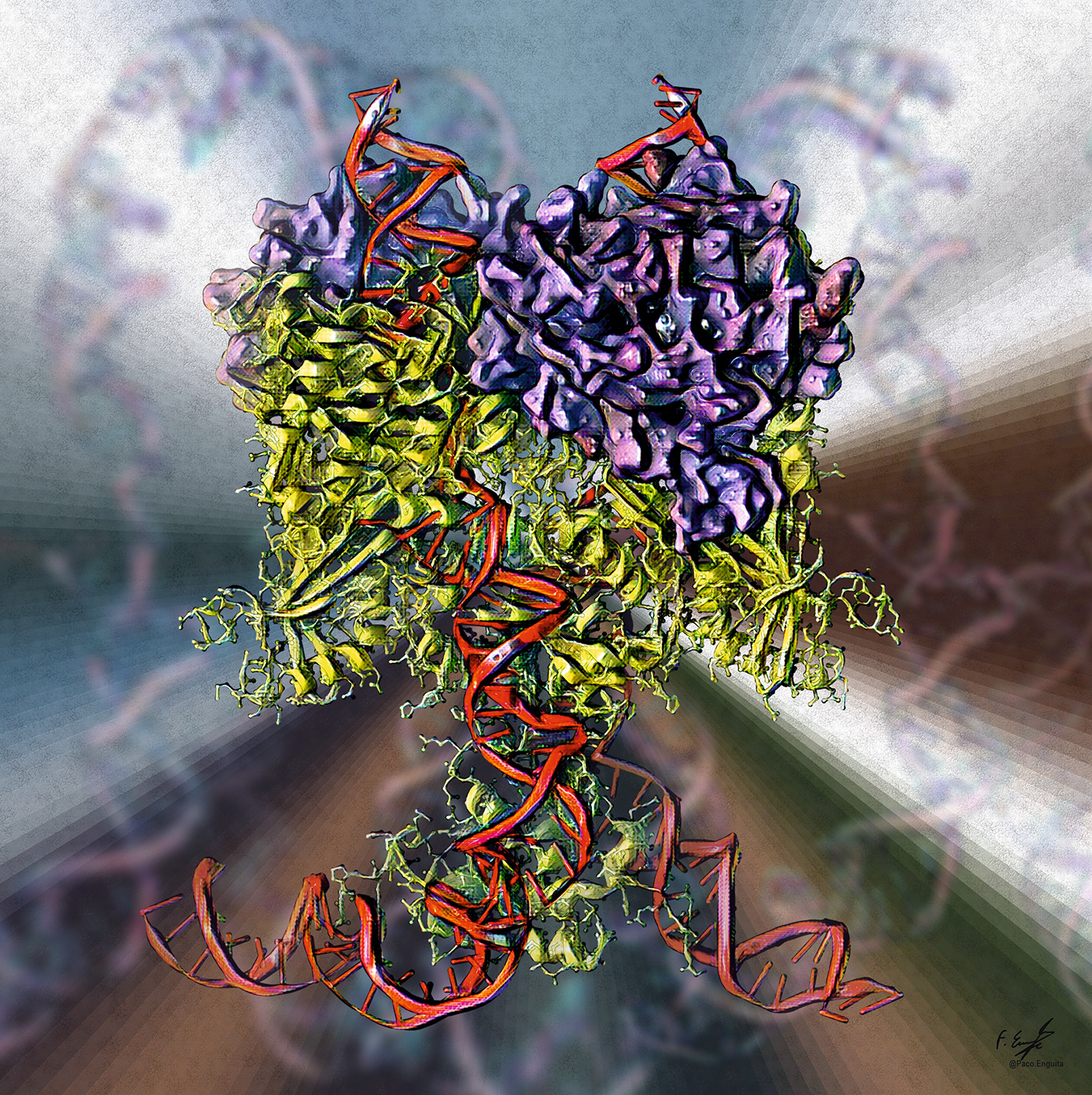


The recombination-activating genes (RAGs) encode parts of a protein complex that plays important roles in the rearrangement and recombination of the genes encoding immunoglobulin and T cell receptor molecules. There are two recombination-activating genes RAG1 and RAG2, whose cellular expression is restricted to lymphocytes during their developmental stages. The enzymes encoded by these genes, RAG-1 and RAG-2, are essential to the generation of mature B cells and T cells, two types of lymphocyte that are crucial components of the adaptive immune system. RAG enzymes work as a multi-subunit complex to induce cleavage of a single double stranded DNA (dsDNA) molecule between the antigen receptor coding segment and a flanking recombination signal sequence (RSS). They do this in two steps. They initially introduce a ‘nick’ in the 5' (upstream) end of the RSS heptamer (a conserved region of 7 nucleotides) that is adjacent to the coding sequence, leaving behind a specific biochemical structure on this region of DNA: a 3'-hydroxyl (OH) group at the coding end and a 5'-phosphate (PO4) group at the RSS end. The next step couples these chemical groups, binding the OH-group (on the coding end) to the PO4-group (that is sitting between the RSS and the gene segment on the opposite strand). This produces a 5'-phosphorylated double-stranded break at the RSS and a covalently closed hairpin at the coding end. The RAG proteins remain at these junctions until other enzymes (notably, TDT) repair the DNA breaks. The RAG proteins initiate V(D)J recombination, which is essential for the maturation of pre-B and pre-T cells. Activated mature B cells also possess two other remarkable, RAG-independent phenomena of manipulating their own DNA: so-called class-switch recombination (AKA isotype switching) and somatic hypermutation (AKA affinity maturation). Here you can see a recent cryoEM structure of the human RAG paired complex with a cognate DNA (PDB code: 3JBW)
#molecularart ... #immolecular ... #lymphocyte ... #maturation ... #somatic ... #recombination ... #VDJ ... #RAG ... #transposon ... #cryoem
Structure rendered with @proteinimaging and depicted with @corelphotopaint

